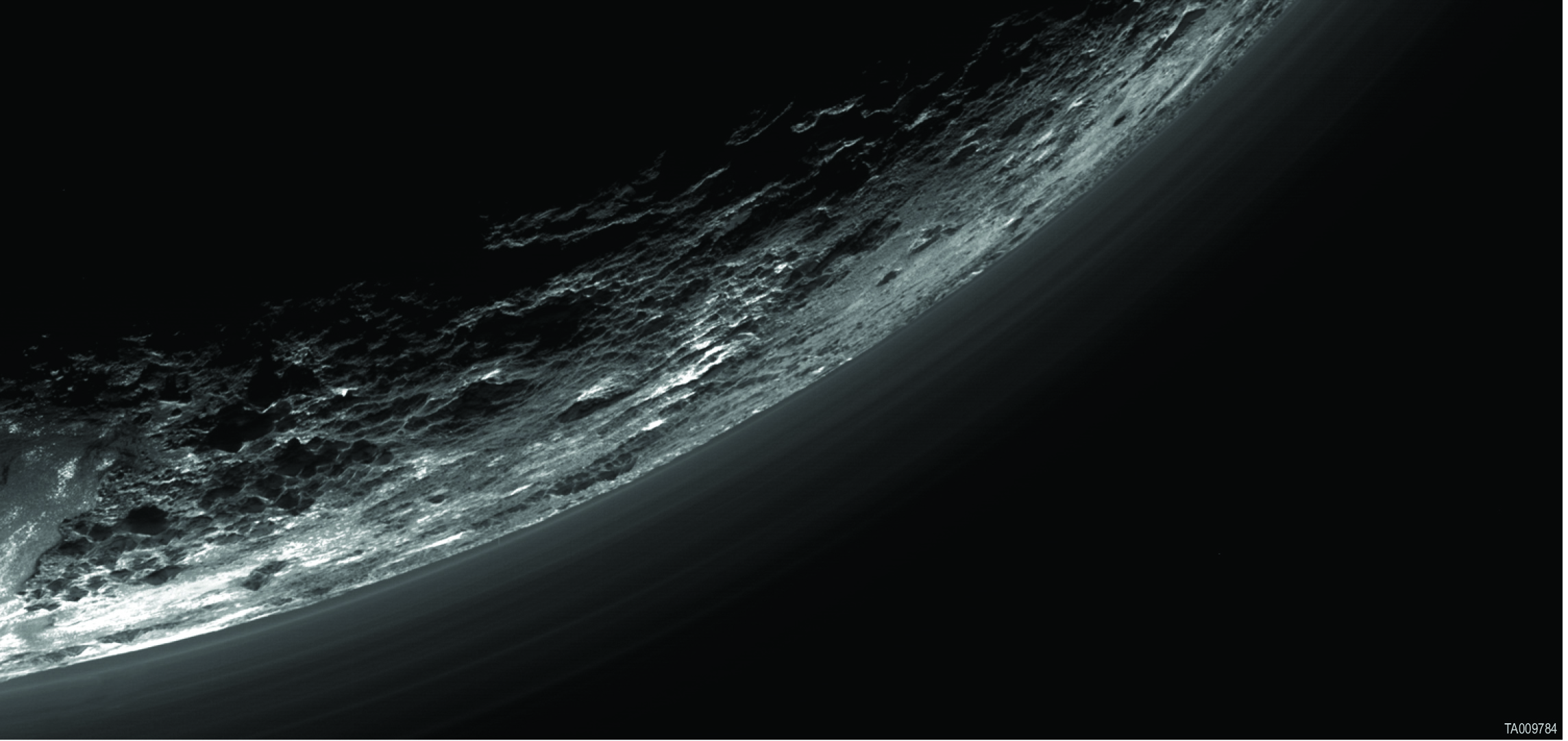Mystery of Pluto's Super-Cold Weather Solved

The more we learn about Pluto, the more interesting the little world becomes.
Hydrocarbon particles in Pluto's atmosphere are responsible for the dwarf planet's surprisingly low temperatures, a new study suggests.
Pluto is therefore the only planetary body known whose temperatures are driven more by haze particles than by gas molecules, study team members said. [Amazing Photos of Pluto and Its Moons]
"This is kind of a new regime of the climate of planets," lead author Xi Zhang, of the University of California, Santa Cruz, told Space.com. "We never saw this before."
Colder than expected
Modeling work based on Pluto's atmospheric composition had predicted that temperatures there would hover around minus 280 degrees Fahrenheit (minus 173 degrees Celsius). So it was a head-scratcher when, during the probe's epic flyby of Pluto in July 2015, NASA's New Horizons spacecraft measured temperatures that were about 53 degrees Fahrenheit (30 degrees Celsius) lower than that.
New Horizons also spotted multiple layers of haze extending high above the dwarf planet, which scientists hadn't known about before. This stuff is likely created by chemical reactions in Pluto's upper atmosphere, where ultraviolet radiation from the sun interacts with nitrogen and methane to form small hydrocarbon particles, mission team members have said.
Similar reactions are thought to occur high up in the atmosphere of Saturn's biggest moon, Titan, which sports haze so thick that it obscures views of the surface.
Breaking space news, the latest updates on rocket launches, skywatching events and more!
Pluto's haze is key to keeping the dwarf planet supercool, Zhang and his colleagues said. They performed some modeling work of their own, using data New Horizons gathered about the distribution of gas molecules and haze particles.
The team found that Pluto's haze absorbs solar energy efficiently, but also emits a great deal of that energy back out into space in the form of infrared radiation (heat). The study's modeling results match up quite well with Pluto's observed temperature profile, Zhang said.
"The atmosphere is composed of gas, of course," he said. "But gas temperature is not controlled by the gases themselves — it's actually controlled by the haze particles."
This is true up to an altitude of about 435 miles (700 kilometers), beyond which the dominant process is plain old heat conduction, the researchers wrote in the new study, which was published online today (Nov. 15) in the journal Nature.
The new results are exciting, but they don't represent the last word on the subject, according to Robert West, a scientist at NASA's Jet Propulsion Laboratory in Pasadena, California.
"The case is not yet closed on our understanding of Pluto’s atmospheric temperature," West, who was not a member of the study team, wrote in an accompanying "News and Views" commentary in the same issue of Nature.
"For instance, there are no observational constraints on the composition of Pluto’s haze, which means that the authors’ calculated heating and cooling rates are highly uncertain," West added. "Without constraints, modellers are free to consider many possible haze compositions that have a wide range of optical constants — quantities that characterize the optical properties of a material."
Such questions could be settled soon. If Pluto's hazes are indeed radiating lots of heat out into space, NASA's James Webb Space Telescope, which is due to launch in 2019, should be able to detect it, Zhang said.
Is Pluto special?
Pluto is likely so haze-driven in large part because it's so cold: Gases at such temperatures are mostly condensed and therefore cannot contribute much to the cooling process, Zhang said.
It's too early to say whether Pluto is unique in this respect, or if other objects are similarly haze-dominated, he added.
"We're actually investigating that," Zhang said. "We think maybe on some other planetary bodies, in part of the atmosphere, the haze could dominate as well. But people just didn’t think about it in this way before."
Follow Mike Wall on Twitter @michaeldwall and Google+. Follow us @Spacedotcom, Facebook or Google+. Originally published on Space.com.

Michael Wall is a Senior Space Writer with Space.com and joined the team in 2010. He primarily covers exoplanets, spaceflight and military space, but has been known to dabble in the space art beat. His book about the search for alien life, "Out There," was published on Nov. 13, 2018. Before becoming a science writer, Michael worked as a herpetologist and wildlife biologist. He has a Ph.D. in evolutionary biology from the University of Sydney, Australia, a bachelor's degree from the University of Arizona, and a graduate certificate in science writing from the University of California, Santa Cruz. To find out what his latest project is, you can follow Michael on Twitter.

